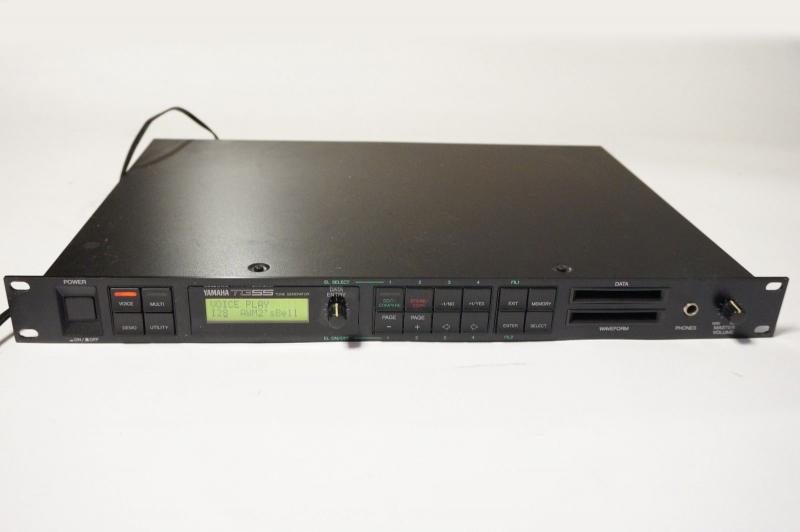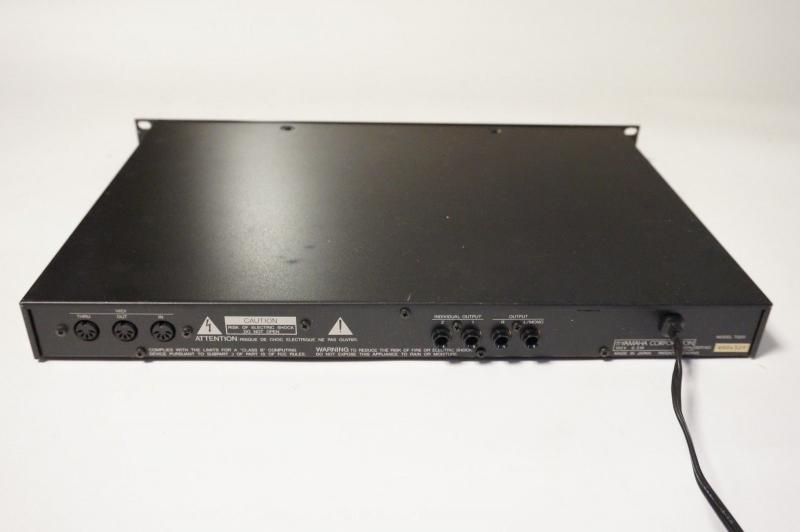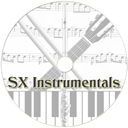Filter on ALL, SYNTH, DRUM, SAMPLER or MISC |
Total list currently 2405 items in 330 Brands |
Yamaha | TG55 |
Description | In the range of Yamaha’s late ‘80s - early ‘90s digital synths the TG (Tone Generator) line was the group of mainly rack-mountable instruments. Some of them were the module version of the SY-workstations (without keyboard and onboard sequencer). The TG55 is basically a 16-bit sample playback based synth module – perhaps the first one from Yamaha employing this kind of sound generation, other than the old classic FM at DXs and TX modules - which appeared also in the same era like, e.g. the Roland U-220. In its 2MB sample ROM, amongst 74 waveforms there are 50 acoustic instruments, 16 drum sounds, 8 digital waveforms – all of them are sampled in 16-bit depth and at 32 or 48 kHz sample rate. The TG55’s sample oscillators are called "elements" - each patch consists of 1, 2, or 4 of them. The maximum polyphony is 16 voices. What’s more, TG55 has 2 digital resonant filters (HP/LP, and LP - both with 12dB/oct), LFO with 3 possibilities (to amplitude, to pitch or to filter cutoff) , 3 Envelope Generators - 5 stages envelope, and 34 programmable digital effects (reverb 8-types, delay, stereo panning delay, gate and distortion) for shaping the sounds further. It has a keyboard workstation brother called SY55 (that lacks the extra pair of individual outputs) released a year later. The TG55's successor, the TG500 had a much larger sample ROM and polyphony two years later. In the family of TG modules, somewhere between the rather tabletop vector-controllable AWM/FM TG33 module, and the flagship TG77 – which is a real monster with its AWM2/AFM capabilities – the TG55 (and later the TG500) is unique using pure AWM2 sound generation method. Nowadays, TG55 may seems a little dated but it’s also a quite underrated 1U module that still can produce interesting sounds. Although it’s a bit difficult to edit with only the onboard buttons, it has extensive voice editing functions. Since TG55s are very solid, well-built constructions, (plenty of them are still working good after more than 25 years) – while they are relatively cheap these days, they can be useful extensions for a synth setup of experimenter musicians. |
| Brand | Yamaha |
| Model | TG55 |
| Device | Synth |
| Type | Rack |
| Engine Type | Digital |
| Engine | AWM2 |
| Voices (max) | 16 |
| Multitimbral | 16 |
| Oscillators | 4 |
| LFO | 1 Sample & Hold, Saw Up, Saw Down, Sine, Square, Triangle, Delay, Phase |
| Engine Detailed | AWM2, 74 preset waveforms, 61 percussion samples |
| Filter (VCF) | 2 12dB Slope (2-pole), Band Pass, High Pass, Low Pass, Resonance |
| Envelope (VCA) | 4 AWM, 2 filter: Delay, Rate 1, Level 1, Rate 2, Level 2, Rate 3, Level 3, Rate 4, Level 4 |
| FX | 34 effects like Reverb, delay, early reflection, tone control and distortion |
| Memory | 64 preset and 64 user patches, 16 Performances |
| Keys | 0 |
| Key type | N/A |
| Velocity | N/A |
| Aftertouch | N/A |
| Midi | I-O-T |
| Produced: | 1989 - 1989 |
| Legend: | Obvious | Y: Yes, N: No, N/A: Not Applicable | |
| VCO | Voltage Controlled Oscillator | DCO | Digital Controlled Oscillator |
| LFO | Low Frequency Oscillator | Sub | Sub Oscillator |
| VCF | Voltage Controlled Filter | VCA | Voltage Controlled Amplifier |
| Velocity | As with a piano, the harder you hit a key, the louder the sound, unlike most organs which always produce the same loudness no matter how hard you hit a key. | Aftertouch | Pressing a key after you activated it. Channel Aftertouch, no matter which key, it will send a Channel message. Poly Aftertouch, sends the pressure per key instead of the whole channel. |
| Values for OSC, LFO, Filter, Envelope are per voice unless stated otherwise. | |||




